Greetings, fellow SkyWatchers! Are you ready for a rock the night weekend? Then come along as you won’t need a telescope to watch the movement of the planets and the Perseid meteor shower heating up your evenings! If you’d still like a challenge, then why not chase bright asteroid Ceres with binoculars – or look up a challenging globular cluster? If you still need appeal, then there are a couple of great stars that are worth observing… and learning about! Whenever you’re ready, I’ll see you in the backyard….
July 16, 2010 – Today celebrates the 1746 birth of Giuseppe Piazzi. Although we know Piazzi best for his discovery of the asteroid Ceres, did you know he was also the first to notice that 61 Cygni had a large proper motion? Nine days and 38 years later, the man responsible for measuring 61 Cygni, Friedrich Bessel, was born.
This would indeed be a great evening to check out asteroid Ceres for yourself. You’ll find it in Ophiuchus and well placed for either binoculars or a small telescope just above the “sting” of the Scorpion! Here’s a map to help you along the way…
Now let’s take a look at gorgeous 61 Cygni. You’ll easily locate it between Deneb and Zeta on the eastern side. Look for a small trio of just visible stars and choose the westernmost (RA 21 06 54 Dec +38 44 44). Not only is it famous because of Piazzi and Bessel’s work, but it is one of the most noteworthy of double stars for a small telescope. Of the unaided visible stars, 61 is the fourth closest to Earth, with only Alpha Centauri, Sirius, and Epsilon Eridani closer. Just how close is it? Try right around 11 light-years.
Visually, the two components have a slightly orange tint, are less than a magnitude apart in brightness, and have a nice separation of around 30″ to the south-southeast. Back in 1792, Piazzi first noticed its abnormally large proper motion and dubbed it the ‘‘Flying Star.’’ At that time, it was only separated by around 10″, and the B star was to the northeast. It takes nearly seven centuries for the pair to orbit each other, but there is another curiosity here. Orbiting the A star around every 4.8 years is an unseen body that is believed to be about 8 times larger than Jupiter. A star—or a planet? With a mass considerably smaller than any known star, chances are good that when you view 61 Cygni, you’re looking toward a distant world!
July 17, 2010 – This date marks the 1904 passing of Isaac Roberts, an English astronomer who specialized in photographing nebulae. As an ironic twist, this is also the date on which a star was first photographed at Harvard Observatory!
Tonight let’s have a look at a real little powerpunch globular cluster located in northern Lupus—NGC 5824. Although it’s not an easy star hop, you’ll find it about 7 degrees southwest of Theta Librae, and exactly the same distance south of Sigma Librae (RA 15 03 58 Dec –33 04 04). Look for a 5th magnitude star in the finderscope to guide you to its position southeast.
A Class I globular cluster, you won’t find any others that are more concentrated than this. Holding a rough magnitude of 9, this little beauty has a deeply concentrated core region that is simply unresolvable. Discovered by E.E. Barnard in 1884, it enjoys its life in the outer fringes of its galactic halo about 104 thousand light-years away from Earth and contains many recently discovered variable stars.
Oddly enough, this metal-poor globular may have been formed by a merger. Research on NGC 5824’s stellar population leads us to believe that two less dense and differently aged globulars may have approached one another at a low velocity and combined to form this ultra-compact structure. Be sure to mark your observing notes on this one! It also belongs to the Bennett catalog and is part of many globular cluster lists.
July 17, 2010 – Celestial scenery alert! Are you watching the planet dance as Mars heads towards Saturn? You don’t need a telescope to enjoy the early evening trio of bright Venus along the western horizon – or the duet just above it! While you’re out enjoying a relaxing evening, keep your eyes on the skies. The early activity of the annual Perseid meteor shower is really heating up and you can expect to see several “shooting stars” an hour!
Tonight let’s begin with the 1689 birth of Samuel Molyneux. This British astronomer and his assistant were the first to measure the aberration of starlight. What star did they choose? Alpha Draconis, which oscillated with an excursion of 39’’ from its lowest declination in May. Why choose a single star during an early dark evening? Because Alpha Draconis—Thuban—is far from bright.
At magnitude 3.65, Thuban’s ‘‘alpha’’ designation must have come from a time when it, not Polaris, was the northern celestial pole star. If you’re aware that the two outer stars of the ‘‘dipper’’ point to Polaris, then use the two inner stars to point to Thuban (RA 14 04 23 Dec +64 22 33). This 300-light-year distant white giant is no longer main sequence, a rare binary type.
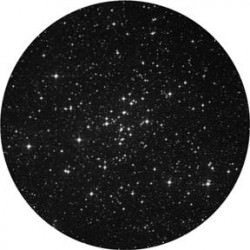 Now head to binary Eta Lupi, a fine double star resolvable with binoculars. You’ll find it by staring at Antares and heading due south two binocular fields to center on bright H and N Scorpii— then one binocular field southwest. Now hop 5 degrees southeast (RA 16 25 18 Dec –40 39 00) to encounter the fine open cluster NGC 6124. Discovered by Lacaille, and known as object I.8, this 5th magnitude open cluster is also Dunlop 514, Melotte 145, and Collinder 301. Situated about 19 light years away, it shows a fine, round, faint spray of stars to binoculars and is resolved into about 100 stellar members to larger telescopes. AlthoughNGC6124 is low for northern observers, it’s worth the wait to try at culmination. Be sure to mark your notes because this delightful galactic cluster is also a Caldwell object and counts for a southern skies binocular award.
Now head to binary Eta Lupi, a fine double star resolvable with binoculars. You’ll find it by staring at Antares and heading due south two binocular fields to center on bright H and N Scorpii— then one binocular field southwest. Now hop 5 degrees southeast (RA 16 25 18 Dec –40 39 00) to encounter the fine open cluster NGC 6124. Discovered by Lacaille, and known as object I.8, this 5th magnitude open cluster is also Dunlop 514, Melotte 145, and Collinder 301. Situated about 19 light years away, it shows a fine, round, faint spray of stars to binoculars and is resolved into about 100 stellar members to larger telescopes. AlthoughNGC6124 is low for northern observers, it’s worth the wait to try at culmination. Be sure to mark your notes because this delightful galactic cluster is also a Caldwell object and counts for a southern skies binocular award.
Until next week? Keep capturing photons!
This week’s awesome images are (in order of appearance): 61 Cygni, NGC 5824, Alpha Draconis and NGC 6124 are from Palomar Observatory, courtesy of Caltech. Maps are courtesy of “Your Sky”. We thank you so much!


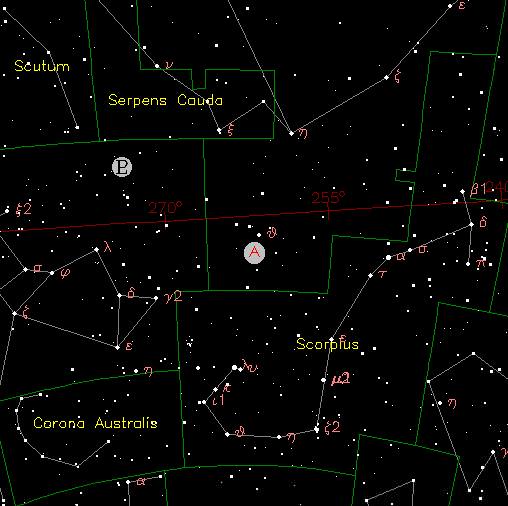

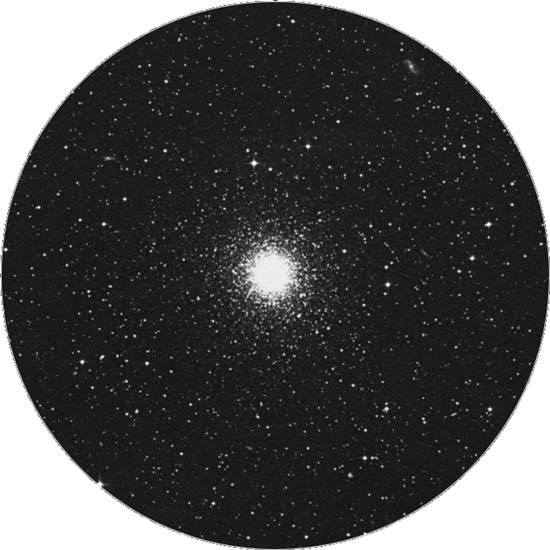
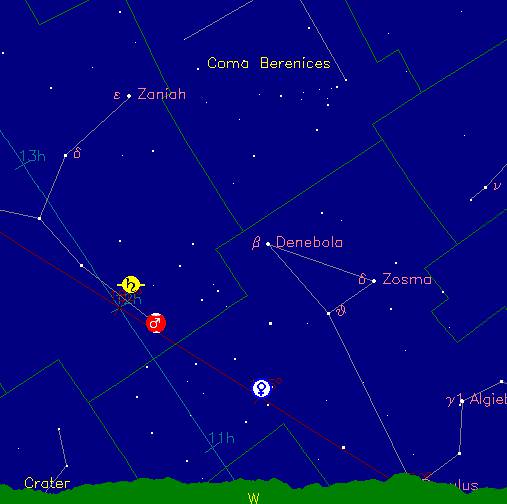
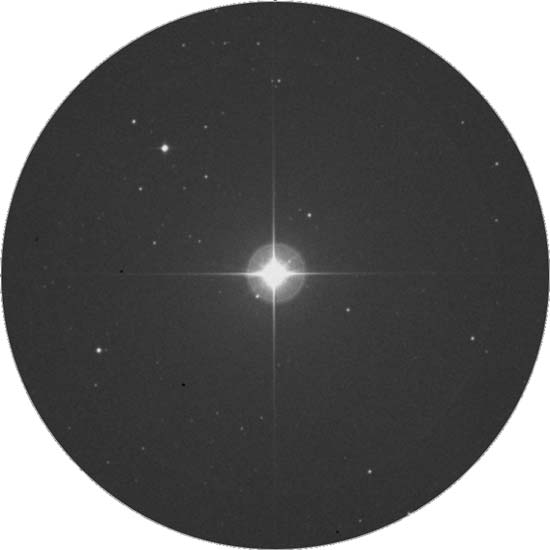
Concerning 61 Cygni “…and have a nice separation of about 3000…” Umm… perhaps a ‘hot key’ is missing and you meant to write 30 arc seconds? My Peterson’s Field Guide for Stars and Planets also puts the orbit at 722 years.
Going ‘up the mountain’ tonight (Sat.)! YIPPEE! La Luna will set early as the Milky Way rises… THEN the fireworks really begin! I will look for NGC 5824!
Bumped into a budding amateur astronomer while shopping recently… she raises pigs! I mentioned that I have on occasion ‘run into’ them while ‘up the mountain’ star gazing, and one night I thought a dune buggy was coming down thru the woods? Later a HUGE hog emerged from the forest and gave me a look that raised all the lil hairs on the back of my head! No worries… he snorted at me, then trotted down the road… no fear! The lil hairs on my head stayed ‘up’ until I was safely home in bed! She asked, “So you are an astronomer?” One thing led to another… and now she wants to buy an old 4 1/2″ Meade reflector I have. She’ll get to tour with it tonight~
Clear skies!
thanks for the heads up, aqua. i’ve fixed it. 😀
your story reminds me of a time when i was visiting in CA and my observing companions had warned me about feral pigs. at the time i was a smoker, a being respectful of my companions and fire hazards, i went to a paved road with a bottle of water to satisfying my cravings. as i was finishing up, i heard a distinctive “clippity clop” of hooves coming up the roadway.
being a rural ohio gal, i don’t spook easily at wildlife, but i had this huge notion in my head of having to wrestle a wild pig to the ground with nothing but my pocket knife and my impromptu sealed ashtray. as i began backing up? the footsteps became faster!
i burst into the observing circle (and i do believe yelling) and all red lights were trained my way. i was being followed by a tiny little black tailed deer!! (now, in ohio, deer run away from you… not towards you.) needless to say, i was both spooked and embarrassed. but i also learned a valuable lesson, too…
don’t be lookin’ to go behind a bush on a trail that says “beware of rattlesnakes” either.
😉
best of luck to you!
LOL! Yeah… when the forest is dry even the smallest little critter can make a heck of a lot of noise! Since I am usually by myself while star gazing, I’ve learned to keep small pile of rocks nearby and toss em at noises. BIG noises are usually deer… but there ARE cougars around these parts. Donno if tossing stones at em would make em mad at me? but it makes me feel better somehow~
Back in 1985 I lived on a ranch up on Sonoma Mountain, outside of Petaluma CA. I took my telescope out most new moons. The owner of the ranch had a mangy little dog that he hardly paid attention to. I like animals, so I would call her over to keep me company while star gazing. One very dark night I was out and I saw what I thought was that dog coming toward me. (I usually had a dog cookie to give her). I bent over to scratch her behind the ears and smelled SKUNK! ACK! THAT was probably one of the fastest exits I’ve ever made!
Pretty soon that milky way will be raising on the East West parallel that will put the sun in the between the Earth and the Milky Way. According to the Mayans, that was the apocalypse. But no despair, in the old days, before the corruption infected the minds of the fearful and weak, the meaning of apocalypse meant a time for rebirth Thats a good thing (My God wants us all to join the big party in the sky).
Woo – Time to take it down a notch
Hi, I’m a recent star gaze fanatic in S Cal and cannot explain why more people are not totally into astronomy. So awesome…
@sCalStrGzr – Congratulations! You have found a hobby that borders on the infinite! (Unless you are in or near the lights of a big city?)
Concerning Sol passing in front of the galaxy causing an ‘aplocalypse’. No worries, no fear – This happens twice a year and has been so for many millions of years. Sol currently passes thru Sagittarus (Towards the central part of the Milky Way galaxy) once a year as it processes around the ecliptic and then 6 months later passes the plane of the galaxy again between the constellations Taurus and Gemini… just like clockwork!
I use a Peterson Field Guide, called “Stars and Planets” to help find my way around. It has TONS of information about all things astronomical and some pretty decent star maps too! It’s great for a beginner or a pro because it is compact, easy to use and is also laminated so the dew doesn’t get to it… A good ref. for binoculars to 4″ scope anyway!
Addendum – Went ‘up the mountain’ last night. And saw Mercury, Venus, Mars and Saturn, NGC 5824 and dozens of other GC’s and nebula – then all my ‘old friends’, but only 2 early Perseids and a couple sporatics. It was clear, warm and calm – I just LOVES summah time astronomy!.
My new astronomy buddy did not make it up the hill last night, but she called to say that last Thursday (A HOT day!), she had a heat stroke while working on her ranch and is taking it easy for a few days – YIKES! Very scarey that! We rescheduled to go up for the Perseids….
“…Sol currently passes thru Sagittarius…” Oops, man did I ever boof that one up?!
ACTUALLY, what happens is that the Earth orbits around SOL. This makes our perspective of where the sun is change. For instance, when the Sun is ‘in’ Sagittarius, that means it is in front of Sagittarius relative to our position. As the year progresses the sun appears to pass in front of all twelve of the Zodiacal constellations…
Re NGC 5824 “in the outer fringes of its galactic halo about 104 light-years away from Earth”
I think there may be an error in the distance given here. It sounds much too close to Earth.
“Re NGC 5824 “in the outer fringes of its galactic halo about 104 light-years away from Earth”
I think there may be an error in the distance given here. It sounds much too close to Earth.”
Buxtehude,
Several sources put NGC 5824 at 104 kly (104,000 ly), others near 110,000 ly. That did sound pretty close. 🙂
wow! what great responses this week… guess i ought to keep throwing in a few errors just to make sure you’re reading!
(she peeps from behind hand and smiles…)
Buxtehude? Jon is absolutely correct. sometimes when i write my brain is engaged 30 words ahead of my fingers and i missed the “k”.
i hope the perseids treat everyone kindly, because i love summer viewing, too! there is certainly something to be said about being at least remotely comfortable outdoors!
best of luck, Aqua… 😉
Thanks for the tip. I ordered the field guide tonight. Based on the conversations I’m reading here…I got some homework!